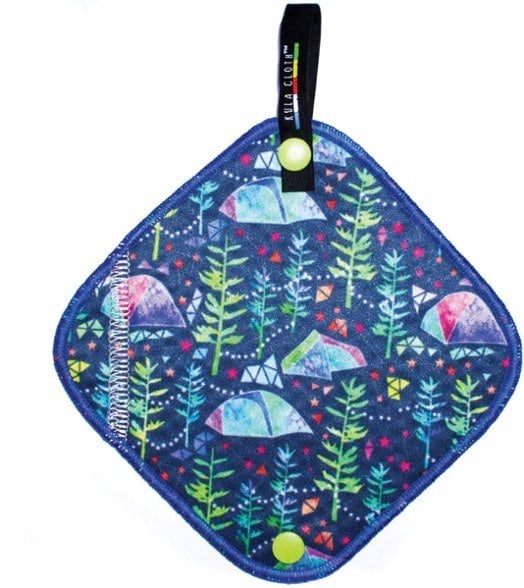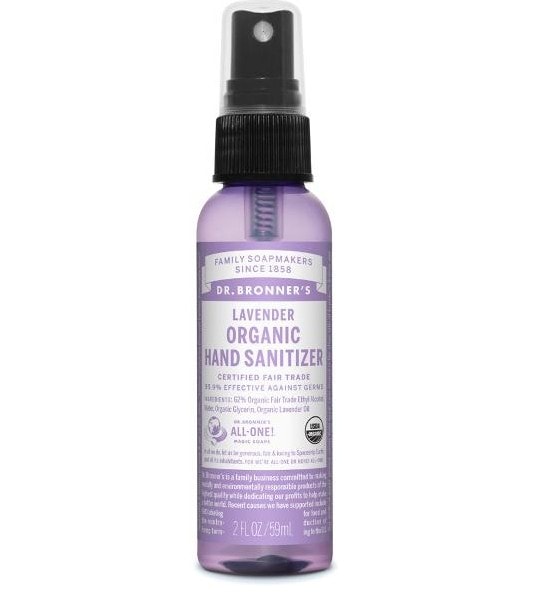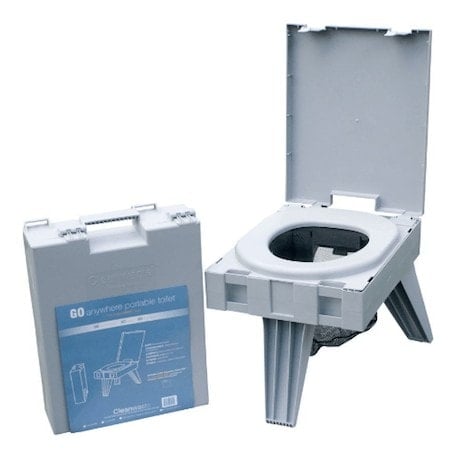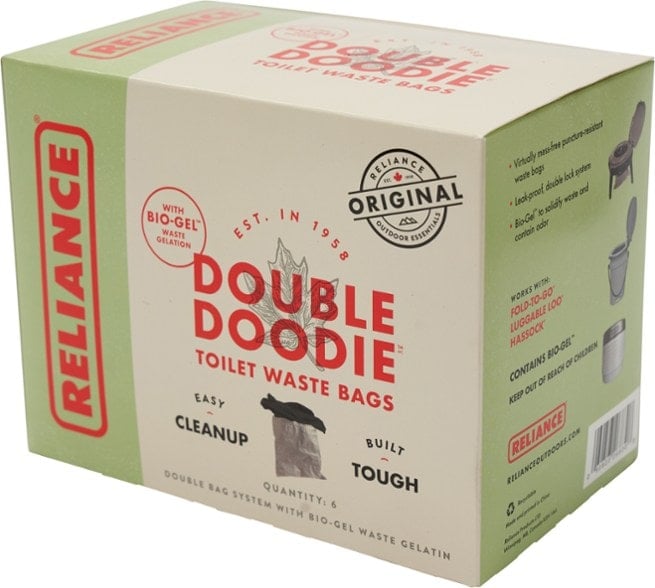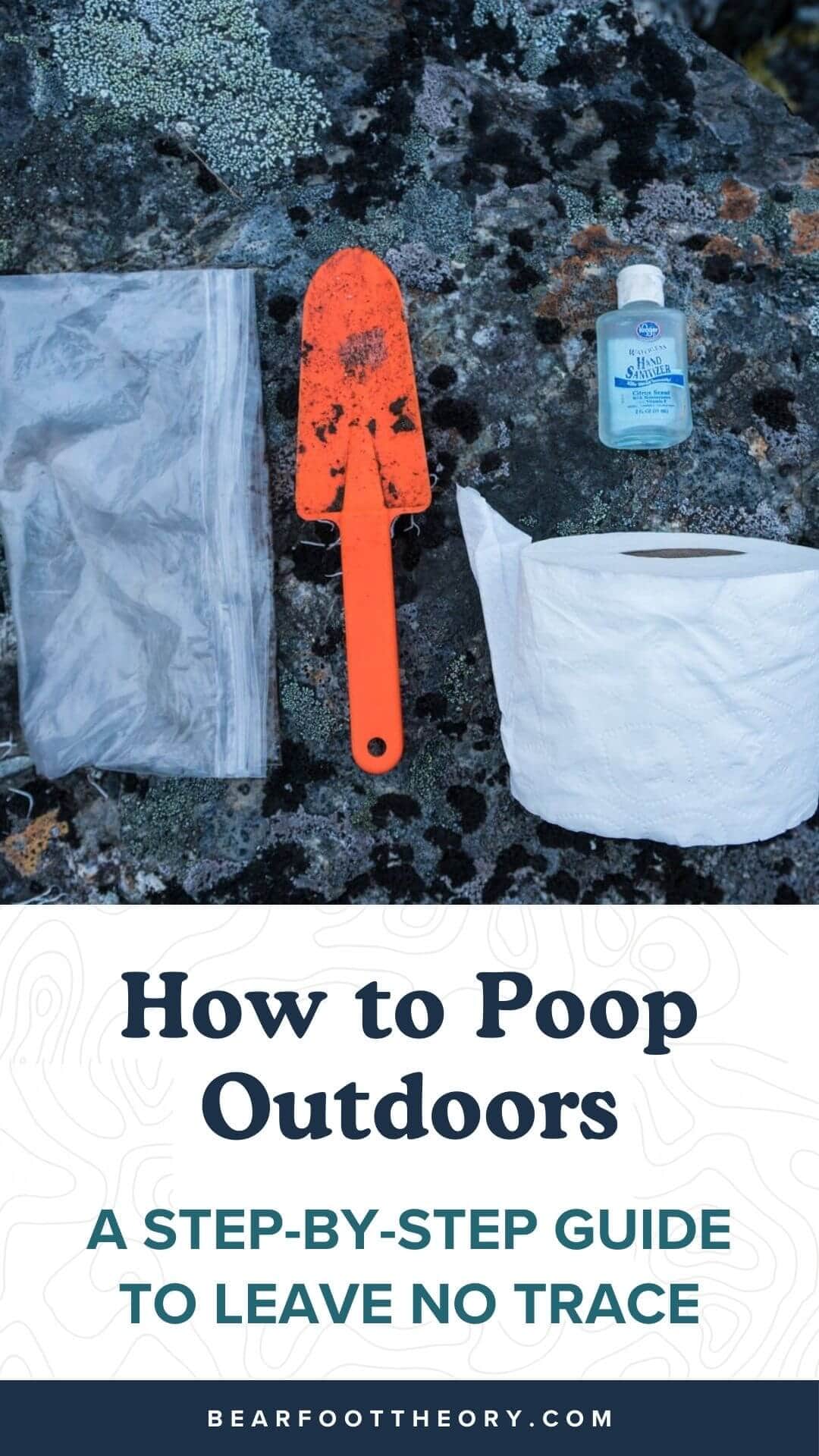How to Poop Outdoors and Leave No Trace
Know how to poop outdoors, pack out toilet paper, and stay clean when camping or backpacking so you can Leave No Trace outside.

How to poop outdoors. It’s a serious topic — that is a little unusual to discuss — but in all seriousness, pooping outside AND packing out your toilet paper (TP) takes knowledge and skill, and it’s so important that everyone doing this knows how to do so correctly. On almost every backcountry trip I’ve been on, I’ve stumbled on used poop-covered toilet paper. Not only is it gross, but leaving your toilet paper and not following Leave No Trace principles can pollute water supplies, cause disease to spread, and attract unwanted wildlife.
The fact is, many folks simply don’t know how to poop outside, thus the reason I chose to write this post. It’s okay if you’re a little disgusted by the topic, but it’s something we gotta talk about. In this blog post, you’ll find out WHY and HOW to poop outdoors properly so you can Leave No Trace, keep trails and camping areas clean, and reduce your impact when you go #2.
Learn how to poop outdoors and follow Leave No Trace with our step-by-step guide below!
This post may contain affiliate links.
Why Is It Important to Pack Out Toilet Paper?
It Helps Protect Wildlife
Animals are attracted to the smell of feces. If you leave toilet paper lying around after pooping outside, you might get some unwanted visitors in your campsite. The last thing you want is a potentially dangerous wildlife encounter that was caused by used toilet paper around camp.
It Helps Protect Drinking Water Sources
If you don’t properly poop outdoors and pack out your toilet paper, when it rains, there’s the potential that the bacteria could contaminate the water source that you and other campers rely on. Diseases such as hepatitis, salmonella, giardia, and other gastro-intestinal diseases can spread as a result of using the bathroom close to water sources. Not to mention, human waste is also a carrier for a lot of infectious diseases not necessarily carried by animals, including cholera, E. coli, salmonella, shigella, rotavirus, norovirus, hepatitis A, and E, etc. While you should always filter your drinking water, it’s still important to follow the Leave No Trace guidelines for using the bathroom outdoors, which means going at least 200ft away from any water source and packing out your toilet paper.
It Helps Leave No Trace
Preserving our wilderness areas and keeping them nice for everyone is so important. You wouldn’t want to come across someone else’s toilet paper remains on the trail, so treat the trail as you want others to treat it. It’s a bit like our post on decorative rock cairns. Coming across used toilet paper is an unwanted reminder that other humans have used and abused the area. With a record number of people getting outdoors to parks and public lands, there is risk that some of these areas will be shut down because of the overuse. In fact, this has happened to many BLM areas and campgrounds as more people get outside and fail to abide by Leave No Trace. Across several states such as California, Utah, and Colorado, the Bureau of Land Management is cracking down on high traffic areas that are left trashed – citing human waste as one of the top reasons for either banning camping in the backcountry, or requiring a permit system.
Burying It Doesn’t Make It Go Away
Pack it in, pack it out. Toilet paper can take a long time to decompose—especially if you are hiking in an extremely dry climate, like the desert — which is why you should pack it out rather than burying it. Animals, including your dog that you share a tent with, can also dig it up. Nothing like getting a nice wet kiss from your dog after it’s chewed up poo-covered toilet paper – yuck!
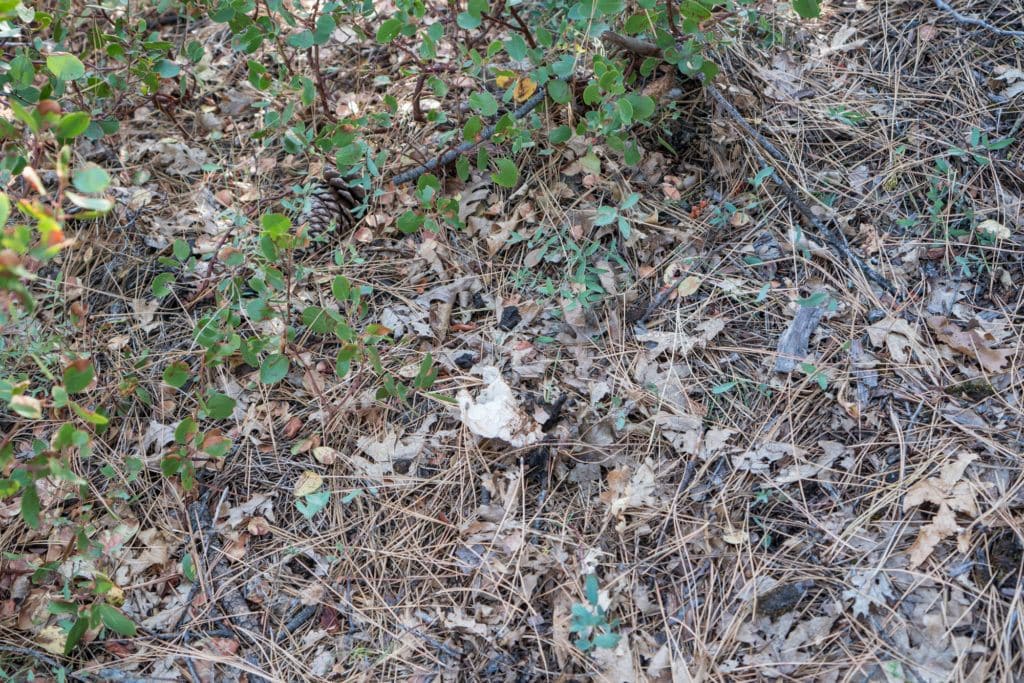
Also, think about this: in 2019, there were 327 MILLION visitors to our National Parks, 180 million visitors to Forest Service lands, and 740 million visits to state park units throughout the U.S. That’s ALOT of people who potentially might poop in the wilderness. Unlike animals, who spread out and roam more freely and widespread, we concentrate our adventures in these parks along narrow corridors (trails and shorelines mostly). This means that human waste and TP left behind from these visits is also heavily concentrated along those corridors.
Special thanks to reader, Jeff M, from Michigan for providing these additional thoughts. Now let’s get to the important part, how to poop outside like a pro.
Save this post!
Enter your email & I'll send this post to your inbox! You'll also receive my weekly newsletter full of helpful advice for planning your adventures.
How to Properly Poop Outside
Step 1: Make a Poop Kit
Pooping outside is easy as long as you have the right tools. First, you need a small shovel, also called a trowel. Here is a trowel that is ultra-light. I carry my trowel in a ziplock bag, along with my clean TP and some hand sanitizer. Then you’ll need a second ziplock bag to carry your used toilet paper (see step #4). It is important to always keep your poop tool kit in your hiking bag – even on shorter hikes, you never know when nature will call, and it’s best to be prepared.
Step 2: Dig a Cathole
When looking for a spot to poop outside, this is what you are looking for:
- Private and off the trail
- At least 200 feet from a water source
- Deep soil where you can easily dig a cathole
- A sunny spot – the sun hitting the cathole will speed up the decomposition
Once you’ve located the perfect poop spot, you want to dig a cathole that is at least 6 inches deep. If you aren’t sure if it’s deep enough, dig a little deeper. The purpose of a deeper hole is to protect the water supply, aid in decomposition, and mask smells from nearby wildlife.
PRO TIP: Don’t wait until you REALLY have to go. Digging a cathole takes a few minutes, and if it feels urgent, your efforts to follow Leave No Trace principles are going to go out the window.

Step 3: Poop in the Cathole and Cover it Up
Next, do your business, cover up the poop with dirt, and fill in the cathole using your trowel. Be careful not to touch the poop with the trowel, since you don’t want to contaminate your handy tool and the bag you store it in. Sometimes I like to put a rock on top of my cathole, so my fellow campers might think twice about digging a hole in the same spot.
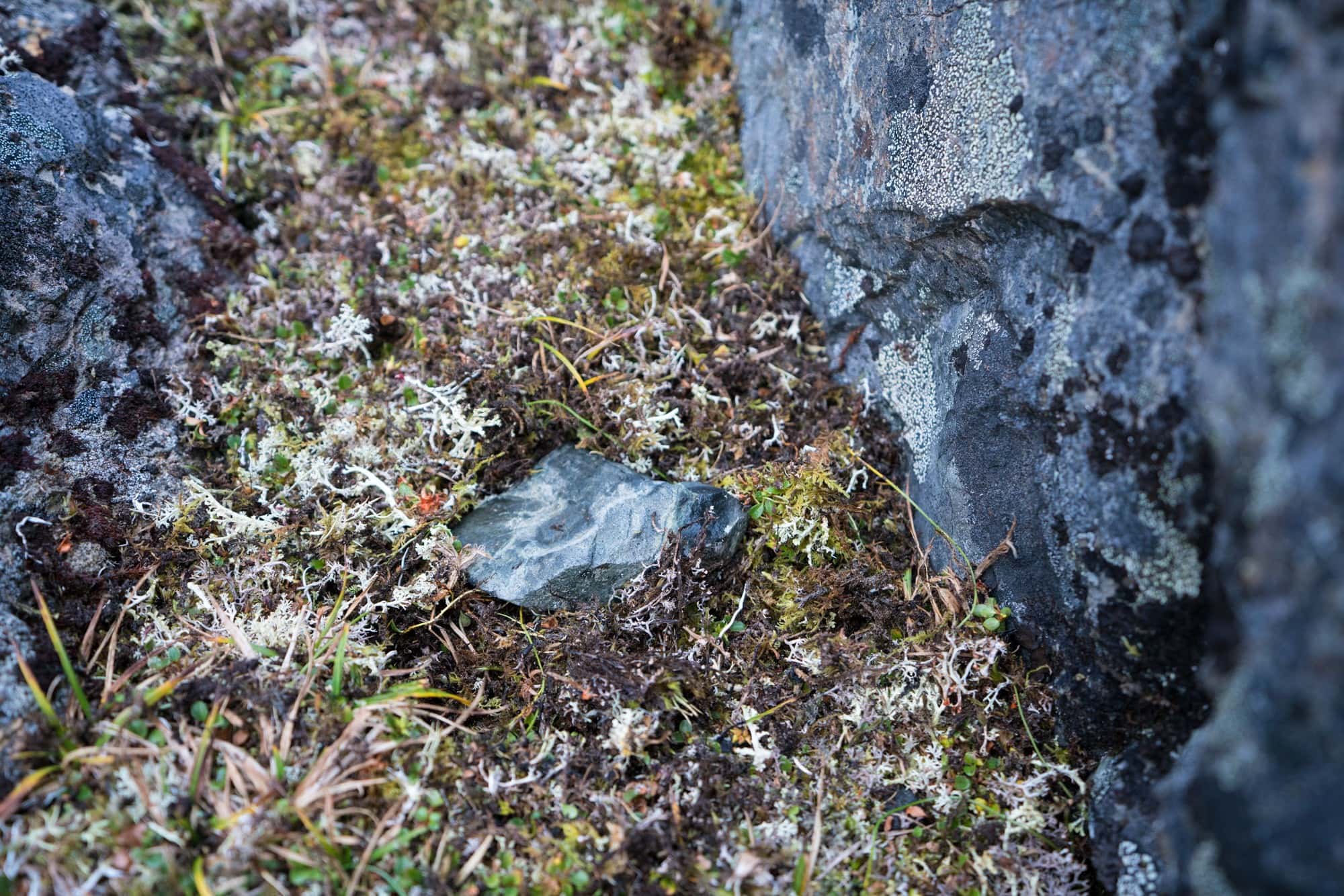
Step 4: Pack Out Your Used Toilet Paper and Use Hand Sanitizer
The final step for how to poop outdoors is what weirds a lot of people out…packing out your used toilet paper – but I promise it’s really not that bad. In the next section, we share some pro tips for packing out your toilet paper privately so no else can smell or see it. So scroll down to hear our advice…and I’ll spare you the pics here 🙂
Oh, and don’t forget to hand sanitize once it’s all said and done!
How to Pack Out Used Toilet Paper When Pooping Outside
When pooping outside, I like to use as little toilet paper as possible to get the job done. After I wipe, I’ll fold my toilet paper and wrap it once with extra toilet paper.
To dispose of your used toilet paper, create a two bag system to keep it disguised and smell-free. First I put the used TP in a small black trash bag (doggie bags work well too). Then I put that into a larger ziplock bag. My trash bag system then goes into a pocket somewhere in my backpack that isn’t used for any food or group gear. That way my friends don’t accidentally find it when they are rummaging through my pack lid for a snack or sunscreen. This two-bag system is also great for ladies who are on their period, since tampons also need to be packed out.
If you find yourself having to use a lot of toilet paper, you might want to consider using baby wipes instead of toilet paper or having a wet-wipe for a final wipe. If you choose to use wet-wipes, make sure to get the non-scented kind, so you don’t have to worry about putting it in your bear canister at night if you are in bear country.
An anti-microbial Kula Cloth (pee rag) is handy for hikes and backpacking trips as well – while this is only meant for wiping after you pee, it significantly reduces the amount of toilet paper you need to carry in and out. One side of the Kula Cloth is waterproof with a fun print, and the other is the absorbent, anti-microbial side to wipe with. It’s super easy to wash after a day or two of hiking. (Note: be sure to rinse your Kula Cloth 200ft away from water if you are cleaning while backpacking).
Keep in mind, you can also consider using natural resources, like leaves, instead of packing toilet paper. This isn’t for everyone. On the Pacific Crest Trail, Kim tried to use snow (not sure about that haha) for wiping after hearing rave reviews from trail friends, but found that it left her with a wet tush and more prone to hiker rash. Others use leaves or smooth rocks but do be careful that the leaves you choose won’t irritate your skin. If you do use rocks or leaves, it is really important that you bury the material in your original cathole.
If you’re still unsure of the double bag system, check out this excellent example from our friends at Leave No Trace.
Once you get back to civilization, you simply throw the entire ziplock bag away.
How to Pack Out Poop in Sensitive Environments
The above step-by-step guide for how to poop outdoors works for most public lands – however, there are certain places, like sensitive alpine environments, desert ecosystems, and narrow river canyons, where physically packing out your poop is required. With more and more people enjoying the outdoors every year, packing out human waste is likely to become a more common practice to ensure the longevity of public lands.
Luckily, there are several easy ways to do so, including Go Anywhere Bags and Double Doodie Bags. These can be used on their own, or with a portable toilet seat (a portable toilet might be best if you are dispersed car camping, van camping, or on a longer overnight river trip as it is bulky). Always be sure to check ahead of time to see if the area you are traveling to allows you to bury human waste or if it must be packed out in one of these bags.

Outside Poop Kit Essentials
Here are the top items we’ve mentioned in this post for your poop kit, minus the toilet paper and ziploc bags:
What tips do you have on how to poop outdoors? Leave us a comment below!


